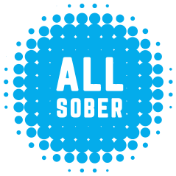Removing Employment Barriers for Those in Early Recovery
Reentering the work force can be daunting, but these companies offer second-chance employment opportunities

One of the critical components to building successful programs that sustain long-term recovery from drugs and alcohol is finding purpose in life by participating in meaningful work that provides income and sense of personal worth. Recovery is defined by the Substance Abuse and Health Administration to include four dimensions. SAMHSA writes:
“Recovery is a process of change through which people improve their health and wellness, live self-directed lives and strive to reach their full potential.” There are four major dimensions that support recovery:
- Health — overcoming or managing one’s disease(s) or symptoms and making informed, healthy choices that support physical and emotional well-being
- Home — having a stable and safe place to live
- Purpose — conducting meaningful daily activities and having the independence, income and resources to participate in society
- Community — having relationships and social networks that provide support, friendship, love and hope
The Americans with Disabilities Act (ADA) of 1990 ensures that people with disabilities have the same rights and opportunities as everyone else. This includes people with addiction to alcohol and people in recovery from opioid and substance use disorders. Addiction is considered a disability because it is an impairment that affects brain and neurological functions. Workplace protections are in place to allow employees time off to address treatment and support needs to allow them to effectively function in the workplace. It does not mean, however, that poor job performance because of impairment is condoned or overlooked.
Many people who are coming into recovery for the first time or after repeated attempts to gain sobriety, as well as those who have encountered legal issues (felonies, incarceration), may face both personal emotional hurdles and stigma barriers in attempting to gain employment. This can be particularly frustrating, as getting or maintaining employment plays a vital role in recovery.
The recovery movement is making progress in combating the stigma surrounding addiction, and we are also witnessing an increased number of companies making commitments to hire and support people who are working to address problems with addiction. Furthermore, recovery-friendly tool kits for employers are being distributed on a grassroots level in several states to encourage workplaces to support their communities by recognizing recovery from substance use disorder as a strength, and by being intentionally willing to work with people in recovery.
Included here are examples of state and company initiatives that illustrate programs that promote recovery-friendly workplaces willing to overlook employment gaps and some brushes with law enforcement while fostering open discussions about addiction.
Hypertherm in New Hampshire is an employee-owned company that designs and manufactures plasma, water-jet and laser-cutting products. Hypertherm started their recovery-friendly workplace program in 2015 as a means of supporting the state program’s initiatives and to retain employees amid the growing opioid crisis. Hypertherm, like 70 other companies in New Hampshire, treats substance use disorders and relapse as medical issues like surgery or maternity — a time for the company to support, not abandon, the employee. The company also pays its workers to volunteer at community organizations and to train as recovery coaches.
Innovative staffing companies like MaineWorks, founded by Margo Walsh, serve as both inspiration and a framework on how to provide fresh-start employment opportunities for those with substance use disorders and those reentering society from jail or prisons; MaineWorks helps fulfill the job needs of construction companies. Walsh herself is in recovery and understands that helping people in early recovery who are willing to help themselves gives them a greater chance of not only holding down a consistent job but also realizing a positive life without the need to return to drug and alcohol use. Operating a company that creates positive change as part of a B Corporation offers an example of companies that combine addressing social, environmental and economic needs.
The success of MaineWorks has recently expanded to states like New Hampshire and Massachusetts that have been hard hit by the opioid crisis and have concentrations of recovery programs. Expanding the model of companies like this will require other states to combine government and nonprofit resources in order to work with private companies to support recovering individuals and have measures of accountability.
The pandemic and resulting labor shortages offer a unique chance to encourage companies to think creatively in recruiting and cultivating a workforce environment that retains and rewards employees for loyalty and consistency. Although no studies currently exist that correlate the value of providing employment opportunities to people in recovery with increased company productivity, this represents a chance to combine staffing needs of companies with making commitments to wellness and being responsive in addressing wide-ranging issues of drug and alcohol addiction. It is a win for government agencies, nonprofits and the private sector to foster and retain employees and make strides in supporting critical elements vital to helping so many people gain and sustain long-term recovery.
For more information about companies taking part in providing second-chance employment opportunities, please visit Fair Shake.
More Relaunch
I'm in Recovery and Ready To Work. What Do I Need To Know?
A job can bring serious benefits to your recovery, even beyond the financial ones. But it can also test you. If you understand a few things going in — or going back — you'll be golden.
Subs & Drugs & Rock & Roll, Part 3: 'I'm a Loser (And I'm Not What I Appear To Be)'
Don Fertman reaches bottom as the jelly donut hits the wall. The latest installment of the longtime Subway exec's memoir.
Subs & Drugs & Rock & Roll, Part 2: A Day in the Life
Don Fertman woke up one morning 40 years ago and poured himself a drink, as usual. But the future Subway exec didn't know this day would be far from ordinary.
Subs & Drugs & Rock & Roll, Part 1: With a Little Help From My Friends
Don Fertman, longtime Subway exec, writes about a pivotal moment in his 40 years of sobriety: what happened after he went public about his recovery on "Undercover Boss."
Here's How To Make the Office Holiday Party Recovery-Friendly
Four ways to make your holiday party more inviting to employees who are in recovery, according to the Society for Human Resource Management.
How Can I Be a Sober Ally in the Workplace?
You're not in addiction recovery, but you want to show up for people who are. Great! Here's what that looks like at the office.
Is Alcohol Big in Your Work Culture? Here's How To Sidestep — Or Talk About It
The "Mad Men" era may be over, but some workplaces can still be particularly challenging in recovery. Some pointers on putting your sobriety first.
Your Guide To Hanging Out and Making Friends in College — Sober
Doing college sans drugs and alcohol doesn't have to be a struggle. Some tips on making bonds that'll last and having a blast.











